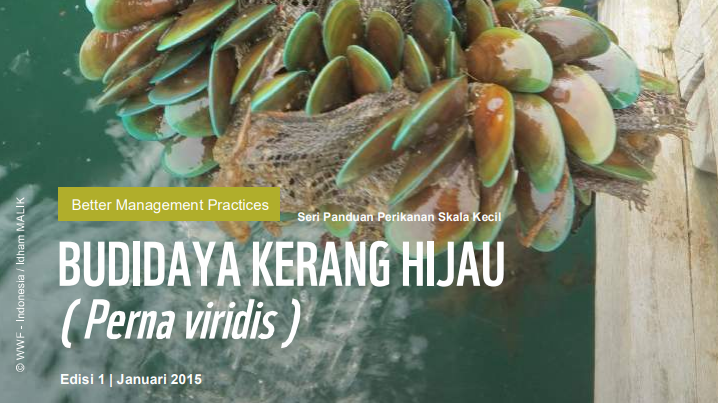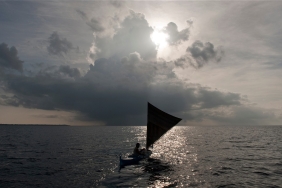GREEN MUSSELS, SPAWNED FROM NATURE
By: M. Hatala Rustam
Perna viridis or green mussels or better known as green mussels, is one of the most widely marketed mussel species. Green mussels live in estuary waters, bays, and mangrove areas with muddy sand substrates and salinity that is not too high. Green mussels have become one of the most widely cultivated commodities because it is not too difficult. In addition, green mussels are able to survive and reproduce at high ecological pressure without being disturbed and without being fed.
Green mussel farmers are mostly found on the north coast of Java, such as in Jakarta and Banten, due to the sandy and muddy water structure. One area where there are many green mussel farmers is Tanjung Kait, located in Tanjung Anom Village, Tangerang Regency, Banten Province. The green mussel seeds themselves come from nature, so the farmers do not need to bother to cultivate green mussels. They simply make cages with bamboo and rope to serve as a medium for growing green mussels and wait until harvest time arrives.
Tanjung Kait is less known as one of the cultivation areas compared to other areas, such as Panimbang, which is also in Banten Province. However, based on information from cultivators and collectors in Tanjung Kait, the harvest of green mussels reaches 1-3 tons per day. The clams are marketed outside Banten, especially to Muara Angke and Cilincing markets in Jakarta and Losari Beach in Cirebon. According to one of the cultivators who is also the head of the green mussel cultivation group, Tanjung Kait is one of the largest green mussel cultivation locations in Indonesia.
The cultivators place their ponds about 100m from the shoreline with floating cages. There are no settlements on the beach itself, only food stalls because this area is also used as a tourist spot every weekend. As a result of tourism activities that are not well supervised, plastic waste is found scattered on the beach around the waters of Tanjung Kait. In addition, another obstacle faced is the weather, almost the same as green mussel farmers in other locations, this happens when the eastern season makes the cages damaged due to storms. Apart from that, the environmental and water conditions in the Tanjung Kait cultivation area are quite good because it is not located in an industrial area or harbor.
So far, green mussel farming has been able to support the economy of the people in Tanjung Kait. Each collector on average absorbs a hundred workers, who are mostly housewives, for the process of cooking and peeling green mussel shells. Likewise, when cultivators want to install cages or when harvesting, each cultivator employs one another continuously so that green mussel cultivation activities continue to run.< br />
The cultivators expect serious attention from the government, especially the local Fisheries Marine Office (DKP) so that the cultivators in Tanjung Kait are able to maintain green mussel cultivation. They also need training and post-harvest management, especially the utilization of shell waste that has accumulated. If this can be done well, green mussels can be better utilized to support the economy of the community both in Tanjung Kait and in other green mussel farming locations.
WWF-Indonesia is currently developing the Green Mussel (Perna viridis) Good Fisheries Practices (BMP) Guideline to support green mussel products obtained from unpolluted locations and safe for public consumption. In addition, the management of Green Mussel cultivation areas can be organized in the form of groups with institutional strengthening points that can be useful for cooperation in overcoming cultivation problems, and can facilitate farmers in the provision of technical facilities and marketing of crops.





